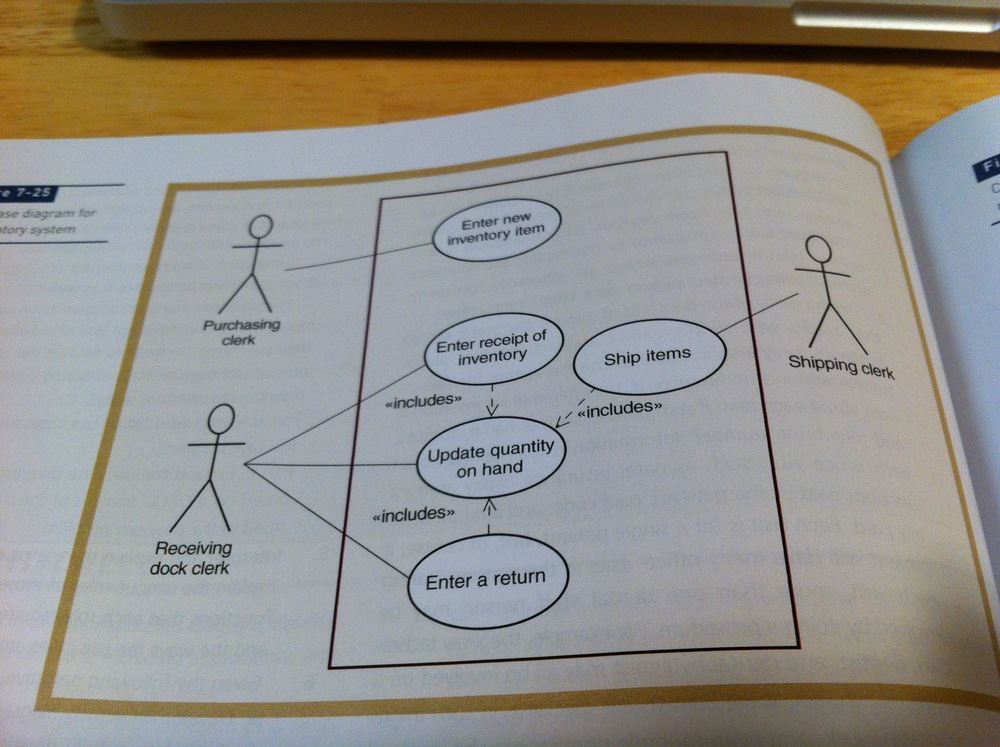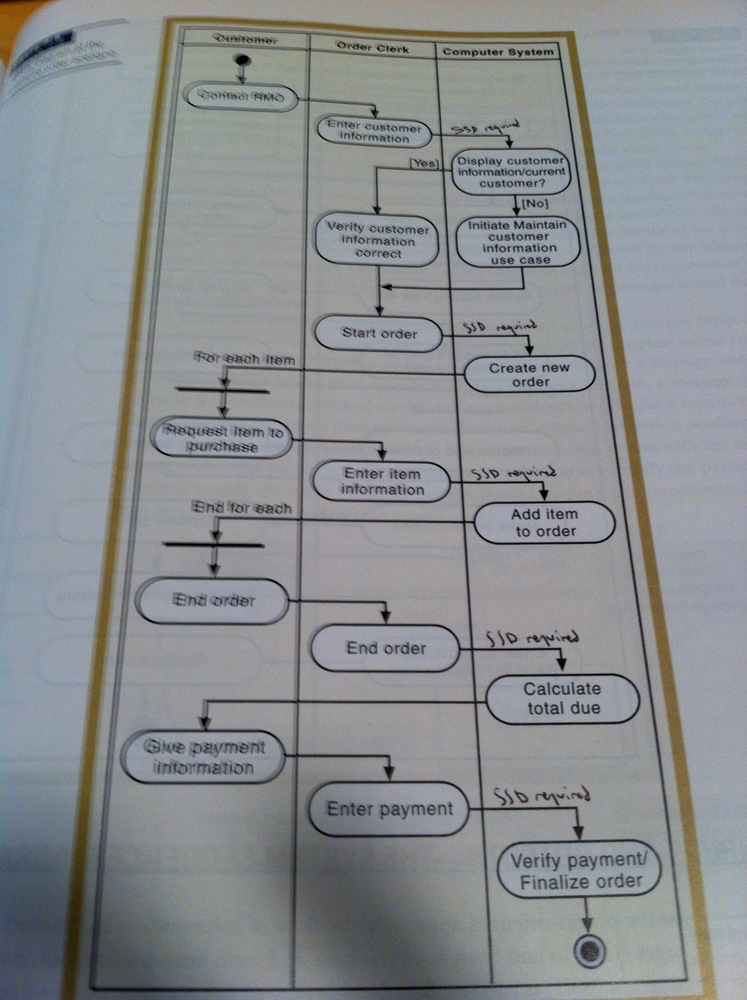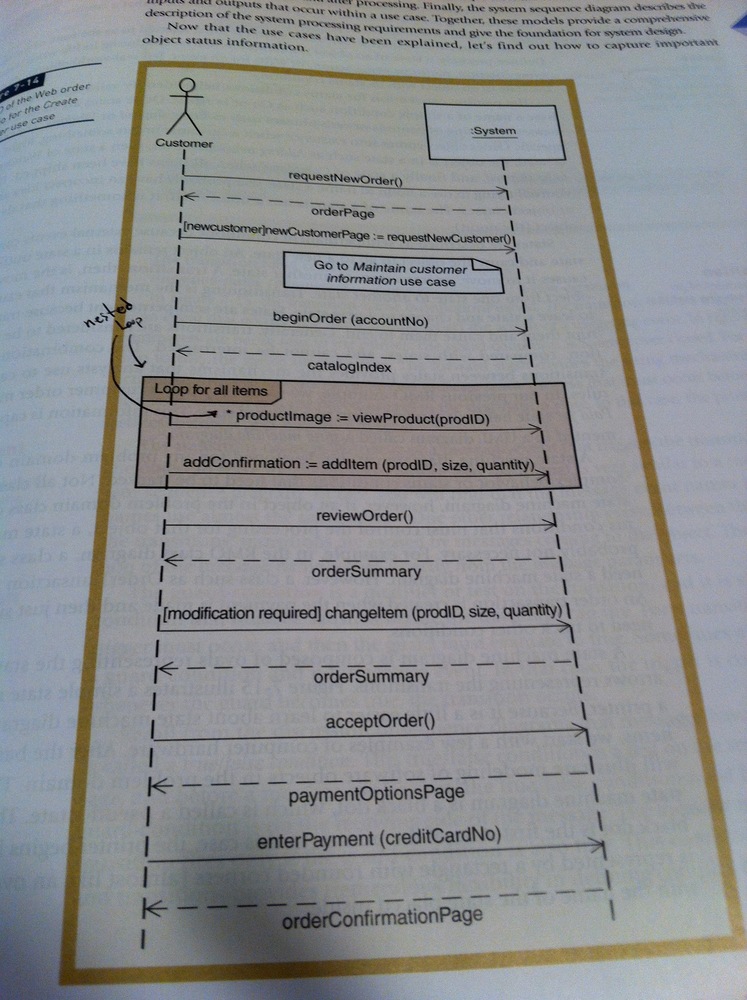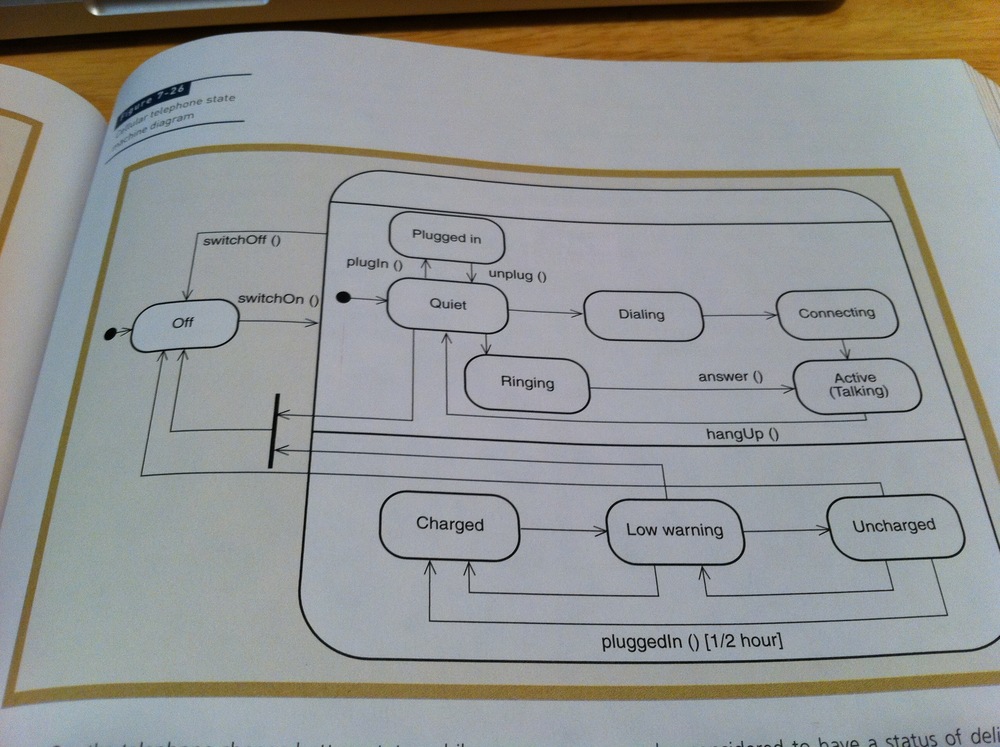If you are interested in Information Systems, this post is for you. If not, ignore it and go watch this.
[youtube http://www.youtube.com/watch?v=GZBbtk47vZw?wmode=transparent]
Still here? Well then you must want to learn about Object Oriented diagrams! There are a couple of them, and they are interrelated so here we go!
Use Case – The important thing here is the “hands on the keyboard”. Identifies the system as a whole and tries to find all the major use cases. Can be made from the actors view point (one stick guy and all his uses) or the system (the big box with lots of subsystems). Use Case diagrams are very similar to the Event table.
Do not confuse the Use Case diagram with the Use Case description. Use Case diagram (above) usually the whole system. Use Case (below) just one way to use the system.
Next we have the Activity Diagram. Used to document the flow for each use case, or it is JUST ANOTHER WAY TO DOCUMENT A USE CASE (I didn’t get that for a while). The purpose of the use case/activity diagram is to document the actor (hands on) with the system. However you can include the other swimlanes (the Customer in the below example) because it makes it easier to understand. Otherwise the clerk would appear to just be doing random tasks. However you only ‘need’ the 2 columns, much like the use case description above.
And the next in line is the System Sequence Diagram (lovingly abbreviated as the SSD). You will notice you have an actor just like the Use Case. But in the SSD you are showing how the actor “interacts” with the system no just using it (more detailed). You need one of these bad boys any time information flows in or out of the automated system, or anytime you breach the system boundary. It is nice when you are using an Activity Diagram because you can see every time you need an SSD. (you can see in the above photo 6 times where I wrote SSD required).
And finally we have the State Machine Diagram which we can safely ignore for the time being.
Hope this helps some of you, if not, it helped me to make it.
Joshua Dance





This helps. Thanks. Page numbers of the photos would have been nice too.